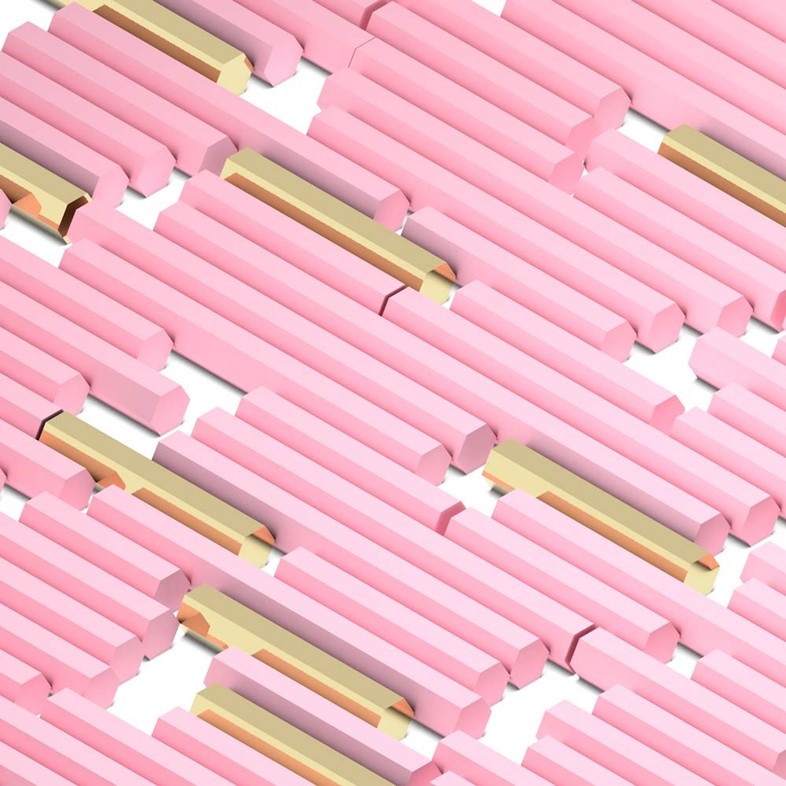After years of research, scientists have finally figured out where gold comes from. super/collider takes a look at the origin story of fashion’s favourite metal
From the ancient Aztecs to Versace’s new Spring/Summer 2018 collection, gold has transcended fashion and culture to remain relevant across millennia. It’s one of humanity’s most enduring precious metals, but it’s taken science until this week to finally pin down exactly where it comes from.
The short answer is that gold and other heavy elements are formed by the explosions created by merging neutron stars – super dense suns that weigh twice as much as ours but are only about 10km across. The long version of how we figured this out is an amazing story of cutting-edge physics, astronomy and some timely international co-operation.
Long before it was being liberally applied in the field of hip-hop dentistry, gold was a rare and revered metal. The earliest gold artefacts date back to the 4th millennium BC in the Middle East and the Balkans, and since then it’s never gone out of style. Although it’s found naturally in streams, inside rocks and deep under the ground, scientists have long known that it must have originated in space, along with all the other stuff that makes up our planet.
Because the Earth was once just a big, glowing, molten mass, researchers reasoned that all the original gold that coalesced along with rocks to form our planet eventually sank into the core. Everything we’ve ever found and crafted into jewellery came from asteroids deep in space, which probably also brought life-giving water to the early Earth – thanks asteroids. But how did it get out into space and become lodged in asteroids in the first place?
“The earliest gold artefacts date back to the 4th millennium BC in the Middle East and the Balkans, and since then it’s never gone out of style” – super/collider
The previous hypothesis was that gold and other elements originated in supernovas – massive explosions powerful enough to rearrange protons and create all the ‘stuff’ in the Universe, including the material that makes up the human body. As both Carl Sagan and Moby have pointed out, we are all made of stars. But as scientists learned more and more about supernovas, the theory began to unravel. A new candidate, kilonovas, emerged after observations by the Hubble Space Telescope in 2013, but even earlier this year the debate was still raging.
So what’s changed? In a word, everything. We now have two brand new gravitational wave detectors that can detect the ultra faint cosmic ripples caused by Big Things happening way out in space – stuff like black holes crashing into each other. These two instruments – LIGO in the US and Virgo in Europe – are game changers for physics and astronomy, giving us the chance to ‘see’ things that were previously invisible. Astrophysicist Vicky Kalogera has even compared it to looking at a black and white photo (astronomy before) and sitting in a 3D IMAX movie (astronomy now).
At exactly 1:41pm UK time on August 17 of this year, LIGO detected the tell-tale signs of something massive happening. Two neutron stars 130 million light years away were spiralling inwards towards each other, sending ripples in spacetime out across the cosmos. Within 21 minutes, an alert went out and over 70 telescopes all around the world and in space turned towards the subsequent kilonova explosion as the two stars died in a intense burst. With so many countries and astronomers of all nationalities involved, it became the most observed celestial event in human history.
Analysing the aftermath with different telescopes working across all wavelengths (from X-Rays to infrared to ultraviolet) finally proved that most gold and other heavy elements like platinum and uranium are created by such explosions. Each kilonova creates the equivalent of ten planet Earths made entirely of gold – all blown out into the vastness of space and destined to drift among the stars before perhaps finally raining down on some far-off planet for a yet unborn civilisation to find, melt down, hammer out and wear around their necks in the distant future.
